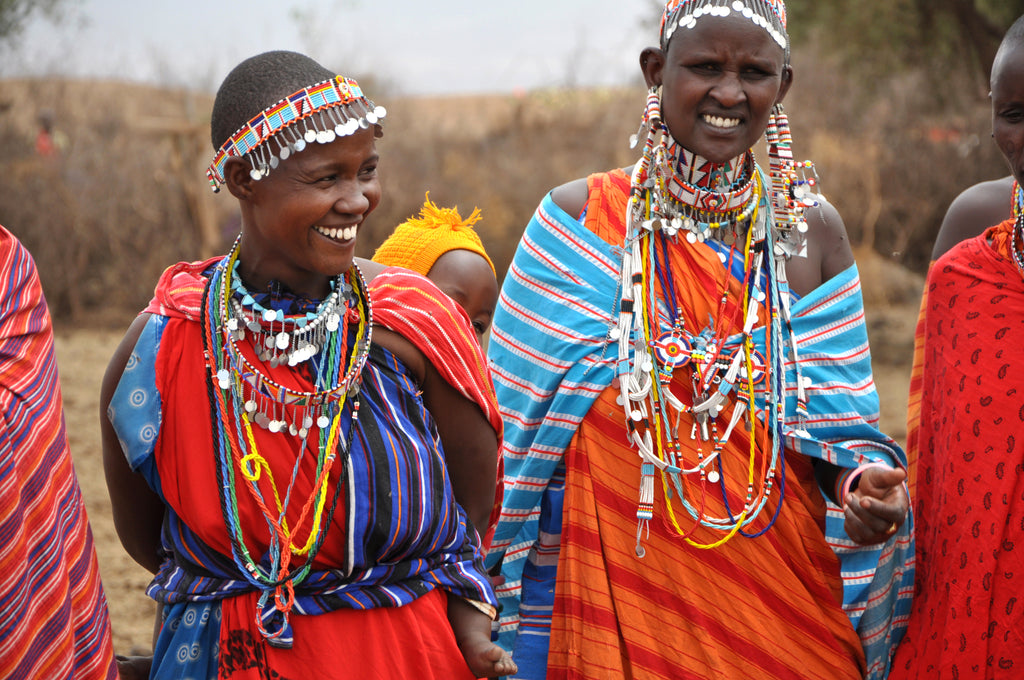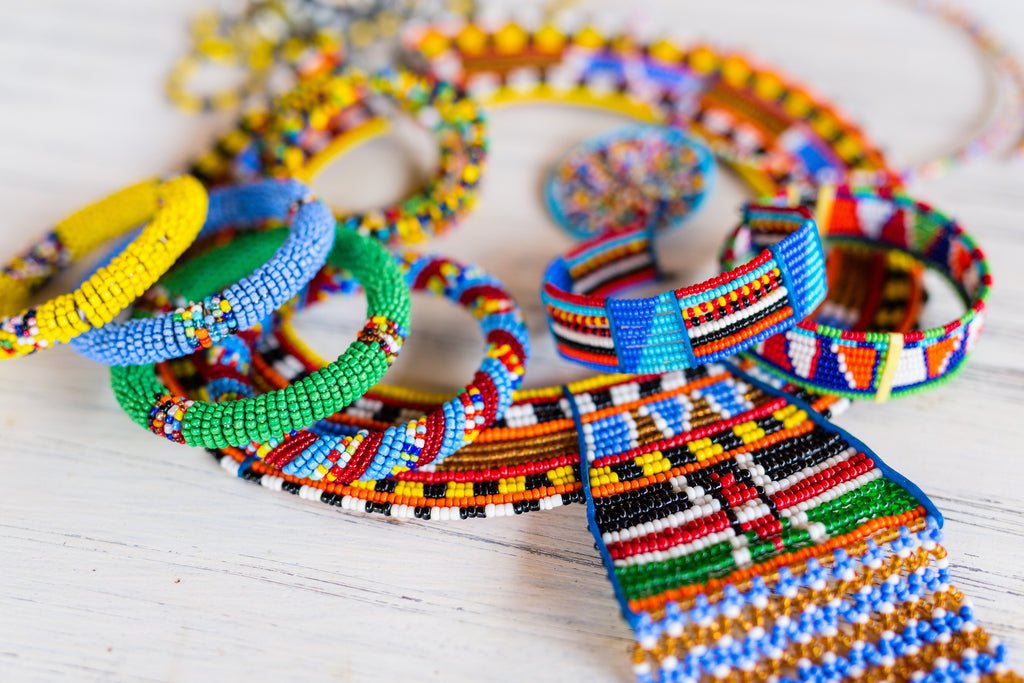Beautiful Beadwork Of The Maasai Tribe
Beautiful Beadwork of the Maasai Tribe
The traditional jewellery of the Maasai tribe is instantly recognisable by its intricate beadwork, bold colours, and eye catching design. Even if you’ve never visited Kenya or Tanzania, you’re sure to have seen authentic Maasai craftsmanship which has made its way around the world, influencing the type of jewellery we choose to invest in today.
Traditional Beading
Beads are a strong symbol of beauty among the Maasai, and colourful beaded statement necklaces are one of the most iconic Maasai handicrafts of contemporary times. But while these pieces are stunningly ornamental, they also play a significant role in the rich culture of this African community. Beads are typically worn to represent status, with tribe elders often adorning themselves in the most elaborate and vibrant accessories.

Before Beads
Believe it or not, beadwork was not always associated with the Maasai. In fact, prior to the late 1800s, much of the jewellery produced by Maasai women was made from locally available materials, such as wood, bone and clay. The bold beadwork that we know and love today came from European settlers, who introduced glass beads to the tribe when they arrived in Africa.
Glass remains the most prominent material in today’s handcrafted Maasai jewellery, but the use of glass isn’t exclusive to the Maasai. Glass has become a hugely popular material, used to create all manner of unique, modern jewellery we see in collections worldwide today.
And just as the Europeans influenced Maasai jewellery, so has Maasai jewellery influenced European designers. The traditional beading technique has transcended into a wide range of contemporary accessories, meaning you may well see Maasai influences today, outside of their native lands.
The Significance of Colour
Aside from the ornate beadwork, one of the things that really stands out and differentiates Maasai handicrafts from that of neighbouring tribes is the use of intense colour that draws the eye. While the colours may appear to be for aesthetic purposes only, each colour has its own unique meaning within the Maasai culture. For example, in Maasai culture, red items would represent bravery, while blue and white represent purity and peace. Green represents health, orange is often used as the sign for hospitality and black signifies the struggle of the Massai people.

Family traditions
Traditional Maasai jewellery is created by the tribeswomen – all women are expected to learn the art of jewellery making and perfect their craft, though both men and women wear the resulting items. The ritual of learning how to bead is one that is shared between mother and daughter, with the matriarch responsible for initiating her child in the art of beading. Pieces of great significance, such as the necklace worn by a bride on her wedding day, will remain in the family long after they have been created as tradition dictates they are passed down through the generations.
